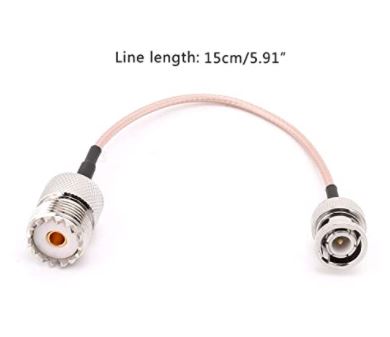The IC705 is the latest and smallest multi-band transceiver by Icom. It covers HF to UHF all mode at 10w (5w on an internal battery)

Power measurement on WM2 meter with external power supply
| RF Power % | Measured Power (W) |
| 100 | 10w |
| 75 | 7.2w |
| 50 | 5w |
| 25 | 2.5w |
| 10 | 1w |
| 5 | 0.5w |
| 0 | 100mW |
If you remove the external power supply, the power control will only reach 50% meaning the radio is limited to 5w, all the other figures remain as stated above. The current draw is around 260 to 320 mA on RX and 3A @ 10w on 13v DC. The standard 7.2v battery provides around 2.5Hrs of portable operating.
Icom 705 with 100w recorded on Hack Green SDR
The radio is packed full of features, many I haven’t explored yet, so more to follow. It support all the usual IC7300 screen layouts we have become familiar with, giving you a choice between a large pan adaptor or more traditional bar chart display.

If you enjoy data modes, then like any USB radio of today this is a breeze to set up just plug and play. The USB codec sound card option will work in the same way as any radio from this vintage, although you may struggle to find the CAT control defined for the IC705 in your digital modes SW. The CIV address for the radio is defined as A4h, but this can be modified. In some software packages (JS8 for example) you may need to change this to 94h and then set the radio to IC7300 in the software.
USB-D is the standard mode for data, this ensures you don’t play your conversation with “her indoors” over the radio while FT8 Sergey in Moscow. No virtual audio cables are needed, just plug and play.
The radio has band buttons defined for SWL and AirBand, although I havent tried these we have no reasons to think it wouldn’t make a good all round receiver.
The software on the radio will be subject to updates, and these can be downloaded from the Icom Japan website. The radio comes with paper instruction manuals in several languages, although I would suggest downloading the online PDF and using that in the field or when portable.
Software updates involve placing the unzipped software into the IC705 directory on the SD card. On the first occasion, I would place a blank SD card into the radio, and using the menu on the radio format the SD card. This will make sure the SD card has the correct directory structure, and you can then go ahead and download the latest firmware. Icom recommend you charge and have both the external power and battery inserted in the radio while performing a firmware update. If the external power was to fail, the radio would complete the update on battery.
You may wish to consider some accessories, one is the external antenna port. This allows you to use a PL259 and removes the loading from the radio BNC socket.
Or at the least a BNC to SO239 adaptor or coax tail
The desk stand is also very helpful, and reduces the chances of scratching the radio head on the desk.

The display can be turned off by pressing the power button briefly, this is ideal if you want to use the radio for a prolonged period of data monitoring. I was surprised the radio was a little heaver (1.1Kg) than I had imagined, and with no fan. It would be interesting to see a teardown, I would assume the transceiver is built around a small block of aluminum.
Online resources


